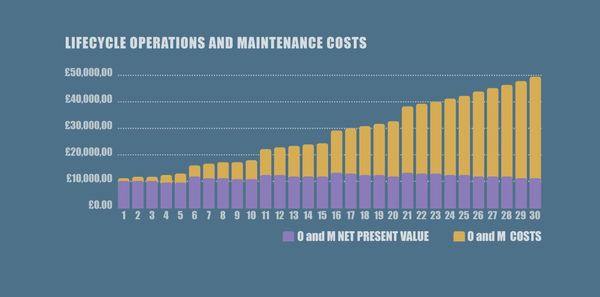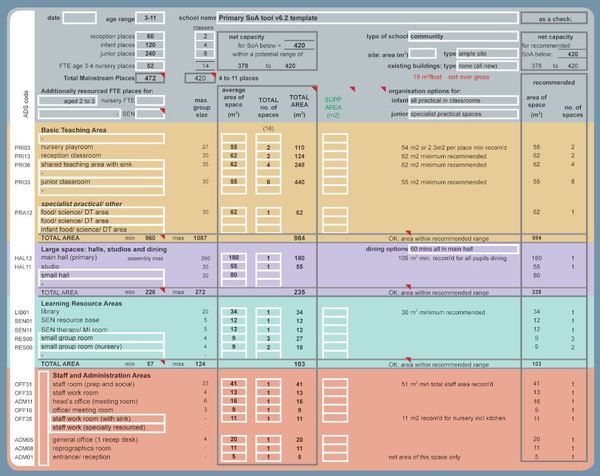BIM Management Handbook
 BIM Management Handbook
BIM Management Handbook ![]() is the latest title from NBS, and serves as an authoritative and practical roadmap for those implementing and managing BIM workflows.
is the latest title from NBS, and serves as an authoritative and practical roadmap for those implementing and managing BIM workflows.
Written by David Shepherd, the former BIM Manager at HOK, it clearly explains standard BIM processes, government standards and the effective coordination of design, construction and asset information. Spanning both organisational strategy and day-to-day practical tasks it explores bottom line business reasoning as well as potential risks and challenges.
Of particular interest is a foreword from David Philp, Director of BIM at AECOM and guidance from Alastair Kell on using the NBS BIM Toolkit.
Here we present an exclusive extract from the book, which looks at the practicalities of aligning a BIM strategy with a client's asset management strategy. We've also all the details you need to secure your copy at a discounted rate from RIBA Bookshops ![]() .
.
Aligning BIM strategy with client asset management strategy
Consulting the client's asset management strategy is a useful starting point for developing an all-encompassing BIM strategy.
Consider a major food retailer that sets a goal of opening 150 new branded high street stores across the country over the next three years. While major project-related costs will be incurred by that decision, associated with that corporate priority is the significantly higher long-term impact on operations, maintenance and disposal costs.
It is because of the relatively higher costs incurred in use and beyond the immediate project lifecycle that a comprehensive BIM strategy must reflect the asset management strategy of the client. Note that this is very different from attempting to consult the client's own BIM strategy (assuming that one exists).
As an example, consider this excerpt from the UK's Network Rail Asset Management Strategy. The Executive Summary explains: 'Network Rail's commitment to its customers is enshrined in a Promise to deliver the Timetable, so that trains run safely, punctually and reliably – now and in increasing numbers in the future. Asset Management supports the delivery of the Promise by planning, delivering and making available an infrastructure that supports the current and future timetable, safely, efficiently and sustainably.'1
It is important to note that the stated approach is in support of the rail infrastructure operator's business commitment. The emphasis is on achieving infrastructure availability capable of supporting the Network Rail's promise to deliver current and expanding future timetable requirements. This goal is qualified by the importance of maintaining safety (which is reiterated), efficiency and sustainability. Later in this document, there is also recognition that 'a significant improvement in our asset management capability is required to live up to this commitment'.
So, it would be neglectful for the design team to adopt a strategy that bypasses Network Rail's asset management goals.
Further along in the Network Rail Strategy document, the importance of the asset management strategy is clarified: 'Asset management of the railway infrastructure is fundamentally about delivering the outputs valued by our customers and funders and other key stakeholders, in a sustainable way, for the lowest whole life cost.'
So, in this case, whatever your internal priorities for BIM, the client stated asset management goal like this one, should shape your long-term BIM strategy. Therefore, one of the client-aligned BIM goals for an infrastructure contractor working on Network Rail projects might read: 'To provide BIM outputs that enable key stakeholders to ascertain readily the impact on asset value of our design and construction alternatives and determine the lowest sustainable whole life cost as design proceeds.'
As another example, consider a Housing Association that has implemented a strategic goal that aims to 'identify a five per cent increase in the overall net present value (NPV) of our property asset base, extracting maximum value for those assets whilst supporting a diverse portfolio to ensure mixed communities.'
Net present value takes inflation into account by discounting costs incurred over the building's lifecycle in order to price them in today's money. In the graph below, the annual increases in operations and maintenance (O and M) costs are depicted by the orange bars, while the purple bars represent their respective net present values.

Figure 1.1 Lifecycle operations and maintenance costs
Given that the Housing Association's goal is a five percent overall increase in net present value, this could be achieved by either gross rental increases, or by reducing the operations and maintenance costs by the same amount.
Here is a corresponding BIM goal that would garner their interest: 'By means of BIM analysis, to optimise sustainable design strategies in order to deliver a consistent five percent reduction on baseline O and M lifecycle cost projections'. Once achieved, this forms a far more likely basis for repeat business with the Association than just streamlining the drawing production process.
As a final example, the Education Funding Agency has implemented a set of non-statutory area guidelines for mainstream schools. In furtherance of this guidance, it has also issued a spreadsheet-based Schedule of Accommodation reporting tool for ensuring that the spaces, as designed, fall within the area ranges (based on group sizes) specified in Building Bulletin 103.
In addition, standardised area data sheet (ADS) codes are used to classify the wide variety of classroom types and room functions.

Figure 1.2 Education Funding Agency’s Schedule of Accommodation tool.
View a larger version of this image. ![]()
In alignment with this official guidance, the corresponding BIM goal would be: 'To facilitate the review of design options by automating the production of area data sheets from BIM and thereby significantly reducing the requirement for manual data entry to complete standardised Schedule of Accommodation reports.'
References
1. Staying on the Right Track – Case Study (2014), (Institute of Asset Management: United Kingdom)
 About this book
About this book
BIM Management Handbook ![]() by David Shepherd, published by NBS, is available from RIBA Bookshops.
by David Shepherd, published by NBS, is available from RIBA Bookshops.
It's already been warmly welcomed by a range of industry experts. Here's a sample of what they've had to say:
If you want to know what standards and processes to use at each RIBA stage for UK BIM Level 2 then this book is for you. David has provided a book that cuts through all the jargon and confusion and provided simple steps for all to follow.
Graham H Stewart, Director, UK Head of BIM/IBT, Ramboll UK
This handbook offers clear practical advice, which distils years of practical experience into a single source which manages to be both detailed and accessible. It is a roadmap for a practice wanting to get to grips with BIM without drama.
David Miller – Director, David Miller Architects
This book is a key source book for the new creature called a BIM or Information Manager. Its authority flows from the author’s many years in HOK, the practice with the longest and deepest commitment to BIM. The chapter on contracts by Professor David Mosey will also be particularly valued.
Richard Saxon CBE, Chairman of JCT

